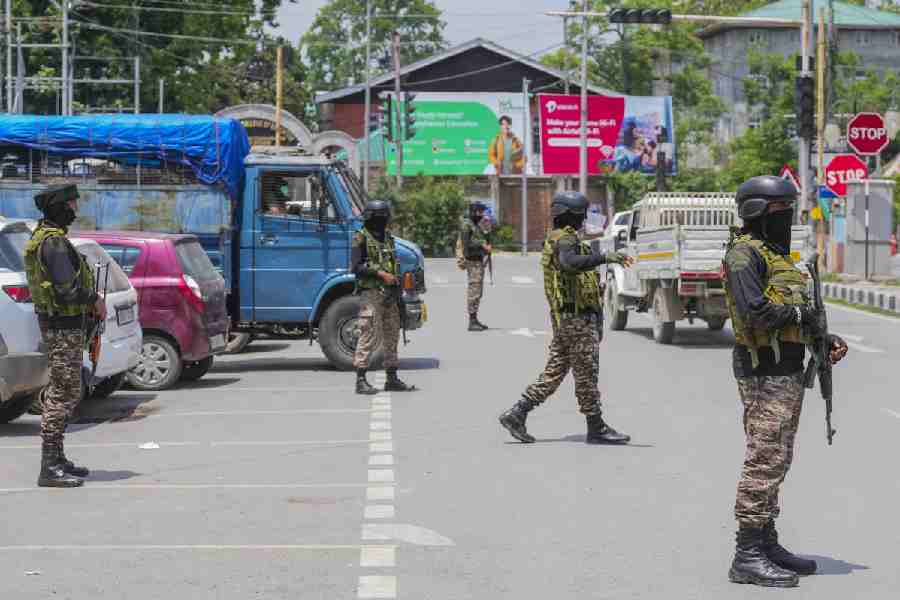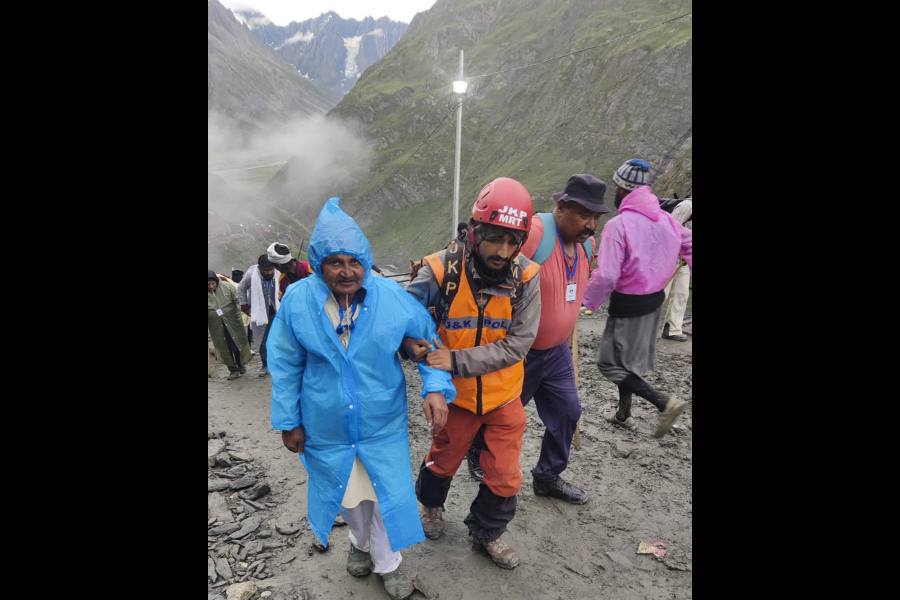
Telegraph picture
Paradip, Aug. 19: The state's first geo-synthetic tube seawall installed to tame the marauding sea off Pentha coast in Kendrapara district has failed to yield desirable result.
With the project failing to arrest sea erosion, the state government has come up with another plan to put in place a 3.5-metre high stone-packing structure adjacent to the geo-tube wall.
Work on the new project along the 505-metre geo-tube embankment is being taken up to protect the synthetic structure. An amount of Rs 4.23 crore would be pumped into the project, executive engineer, saline embankment division, Purna Rath said.
Since the past fortnight, the sea has turned unsteady and rough. Sea waves are pounding the geo-tube powered embankment. Ultraviolet nets encircling the embankment are bearing the brunt of three to four metre tall tidal waves. These nets are providing protective cover to the embankment. The onslaught of waves is being most felt along the embankment. As a result, some of the nets were washed away by the waves, said Rath.
"Though there is no immediate threat to the structure, constant battering of waves in recent past has become a cause for concern. That's why we opted for stone-packing measures to safeguard the geo-tube embankment. The ocean engineering wing experts from Indian Institute of Technology, Chennai were consulted. As instructed by them, we have gone ahead with mounding stones along the geo-tube structure. While the height of the embankment is eight metres, the stone structure would be up to 3.5 metres," he said.
Construction of the seawall project was suspended in June last year during installation of synthetic tubes. Some of the tubes had got ruptured during installation exercise prompting the authorities to put brakes on the work.
After much delay, the Rs 33-crore worth project was commissioned on July 2. The embankment covered 505-metre long wall consisting of 241 geo tubes to arrest the sea erosion.
The synthetic tube embankment, the one of its kind in the state, formed the part of the Integrated Coastal Zone Management Programme (ICZMP) and was funded by the World Bank.
The project construction work was carried out under the technical expertise and guidance of Indian Institute of Technology (IIT), Chennai, to protect the vulnerable villages in Rajnagar Tehsil in Kendrapara district from the onslaught of the crawling sea.
Green activists, however, raised questions about the effectiveness of geo-tube structures stating that such projects had failed to deliver goods in other coastal parts of the country.
"The move to install geo-tube structures to tame sea's fury has failed in the past in Pondicherry and Bengal. Now, the stone-packing measures by the side of tube embankment is indicative of the fact that geo-tube embankment is no solution to tame sea erosion. Without identifying the cause of erosion, it has become an exercise in futility to spend money on mitigation measures," said environment activist Biswajit Mohanty.
"It is a pity that the state wasted Rs 33 crore to put up geo tubes. There is every possibility that the man-made structures would trigger severe sea erosion in nearby turtles' nesting ground at Gahirmatha's Agarnasi Island," said Mohanty.










